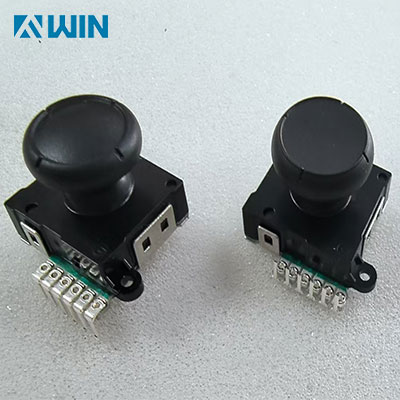Joystick: A Comprehensive Guide to Its Design, Types, and Applications
A joystick is a handheld input device used to control the movement of a cursor, vehicle, or character in electronic systems, such as video games, industrial machinery, or aircraft. It typically consists of a vertical lever (the "stick") mounted on a base with one or more buttons, and it detects movement via sensors or switches.
Core Components and Working Principle
- Stick/Lever: The central movable part, often spring-loaded to return to the neutral position when released.
- Sensors:
- Potentiometers: Traditional joysticks use resistive sensors (potentiometers) to measure the stick’s tilt in X and Y axes, converting movement into electrical signals.
- Hall Effect Sensors: Modern designs may use magnetic sensors for contactless operation, offering higher durability and precision.
- Buttons/Triggers: Located on the stick or base for additional inputs (e.g., firing in games, confirming actions).
- Base/Body: Provides structural support and mounting points, often made of durable plastic or metal.
When the stick is tilted, the sensors measure displacement and send signals to the connected device (e.g., a game console or robot controller), translating movement into actions like steering, aiming, or scrolling.
Types of Joysticks
Joysticks vary by design, functionality, and application:
- Analog vs. Digital Joysticks
- Analog: Sends continuous positional data (e.g., for smooth character movement in games).
- Digital: Detects discrete directions (up/down/left/right) via microswitches, similar to a D-pad.
- Throttle Joysticks
- Used in flight simulators or aircraft controls, combining a stick for pitch/yaw/roll with a throttle lever for speed control.
- 3D/POV (Point of View) Joysticks
- Include a "hat switch" for 8-way directional input (e.g., looking around in first-person games).
- Industrial Joysticks
- Heavy-duty designs for machinery, robotics, or construction equipment, often with rugged materials and waterproofing.
- Gaming Joysticks
- Designed for video games, featuring ergonomic grips, programmable buttons, and compatibility with consoles/PCs (e.g., Xbox, PlayStation, or flight simulators).
Applications of Joysticks
- Gaming:
- Controlling characters in arcade games, flight simulators, and racing games (e.g., classic arcade sticks, modern PC joysticks like the Logitech X56).
- Aviation and Robotics:
- Flight control systems in aircraft, drones, and industrial robots (e.g., military drones, surgical robots).
- Medical Equipment:
- Precision control in medical imaging devices (e.g., MRI machines) or rehabilitation tools.
- Vehicles and Heavy Machinery:
- Joysticks for forklifts, excavators, and wheelchairs, enabling intuitive directional control.
- Virtual Reality (VR):
- Motion controllers in VR headsets (e.g., Oculus Touch, HTC Vive) for immersive interaction.
Advantages and Limitations
- Advantages:
- Intuitive for spatial movement and precise control.
- Versatile across industries, from gaming to heavy machinery.
- Ergonomic designs reduce hand fatigue during long use.
- Limitations:
- Analog joysticks may suffer from "drift" (unwanted signal changes due to sensor wear).
- Less suitable for rapid button-based inputs compared to gamepads.
- Bulkier than other input devices (e.g., mice or touchpads) in some designs.
Evolution and Modern Trends
Joysticks have evolved from simple arcade devices to high-tech tools:
- Wireless Connectivity: Bluetooth joysticks for PCs and consoles eliminate cable clutter.
- Haptic Feedback: Built-in vibration motors enhance immersion in games or simulations.
- Modular Designs: Customizable buttons and sticks for professional use (e.g., eSports or industrial settings).
- Hybrid Controls: Combined with touchpads or motion sensors in VR and mobile gaming.

